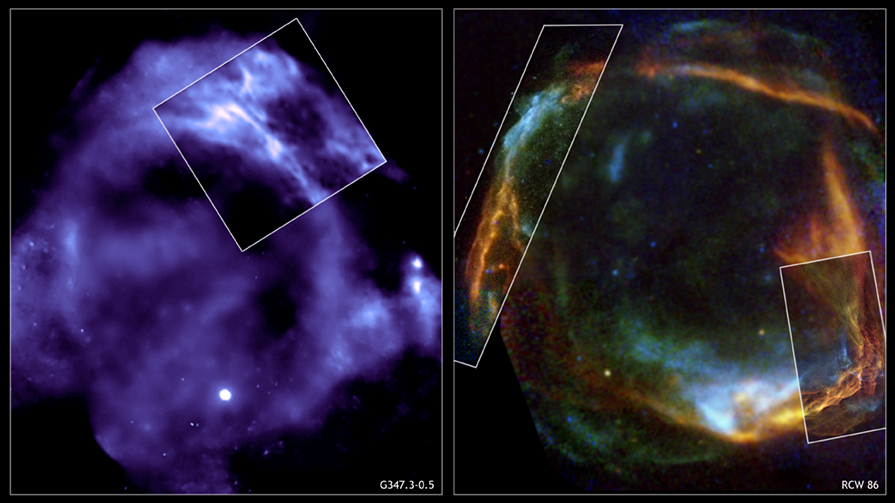
 Credit:Chandra: NASA/CXC/SAO/P.Slane et al.; XMM-Newton: ESA/RIKEN/J.Hiraga et al.; Chandra: NASA/CXC/Univ. of Utrecht/J.Vink et al.; XMM-Newton: ESA/Univ. of Utrecht/J.Vink et al.
Credit:Chandra: NASA/CXC/SAO/P.Slane et al.; XMM-Newton: ESA/RIKEN/J.Hiraga et al.; Chandra: NASA/CXC/Univ. of Utrecht/J.Vink et al.; XMM-Newton: ESA/Univ. of Utrecht/J.Vink et al.
Complement
Stellar post-mortems are conducted by study of supernova remnants. This tells astrophysicists how the explosive death proceeds, and how the cremains are launched into free space. In such studies it helps to see both fine and faint detail. For X-ray astronomers, the XMM-Newton X-ray observatory plus the Chandra X-ray observatory provide capabilities to see both deep and detailed. The images above show two supernova remnants as viewed in X-rays by XMM-Newton and by Chandra. On the left is G347.3-0.5, a Galactic X-ray supernova remnant discovered by the ROSAT X-ray observatory, one of the brightest X-ray supernova remnants known and whose northwestern rim is associated with the production of ultra-high energy TeV photons. On the right is the remnant RCW 86, probably discovered by Chinese astronomers and perhaps the earliest supernova ever recorded. XMM-Newton records the overall structure of the remnants; crucial details in smaller outlined regions are provided by Chandra. The combination of these X-ray observations allow astronomers to determine how the strong shock wave develops after the blast, how particles can be accelerated to extremely high energies, and how the chemistry of the Galaxy is altered by such explosions.
<
HEA Dictionary ● Archive
● Search HEAPOW
● Other Languages
● HEAPOW on Facebook
● Download all Images
● Education ● HEAD
>
Each week the HEASARC
brings you new, exciting and beautiful images from X-ray and Gamma ray
astronomy. Check back each week and be sure to check out the HEAPOW archive!
Page Author: Dr. Michael F. Corcoran
Last modified Monday, 26-Feb-2024 17:47:11 EST


